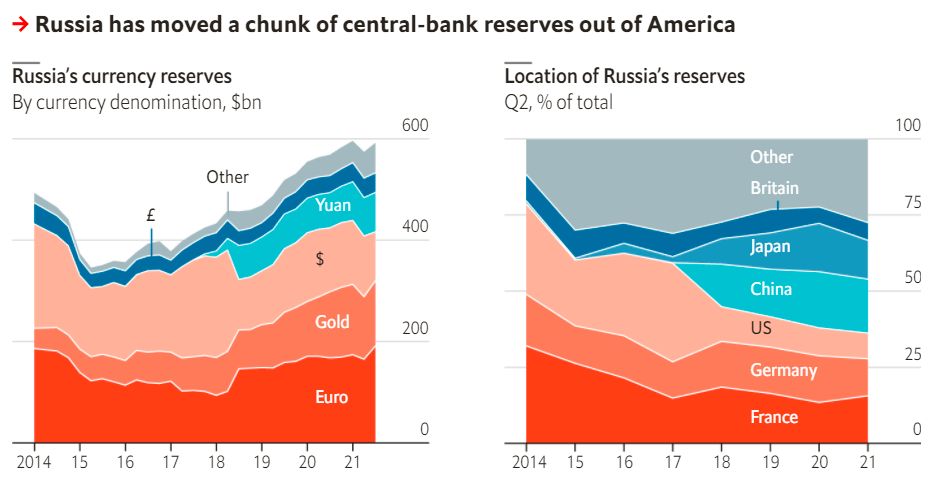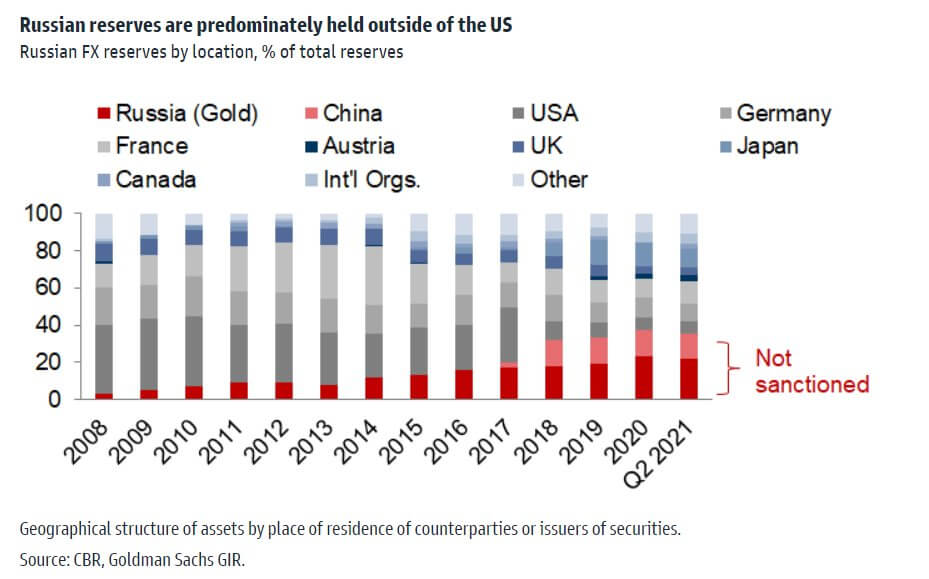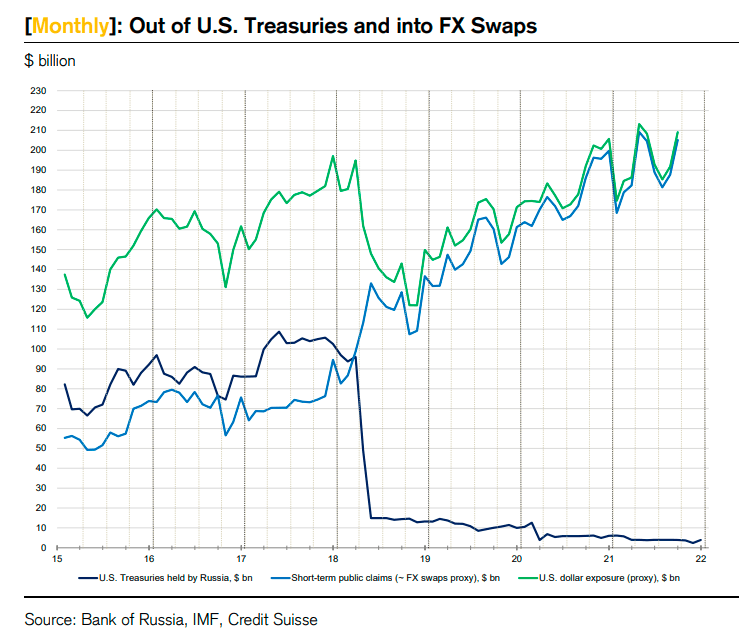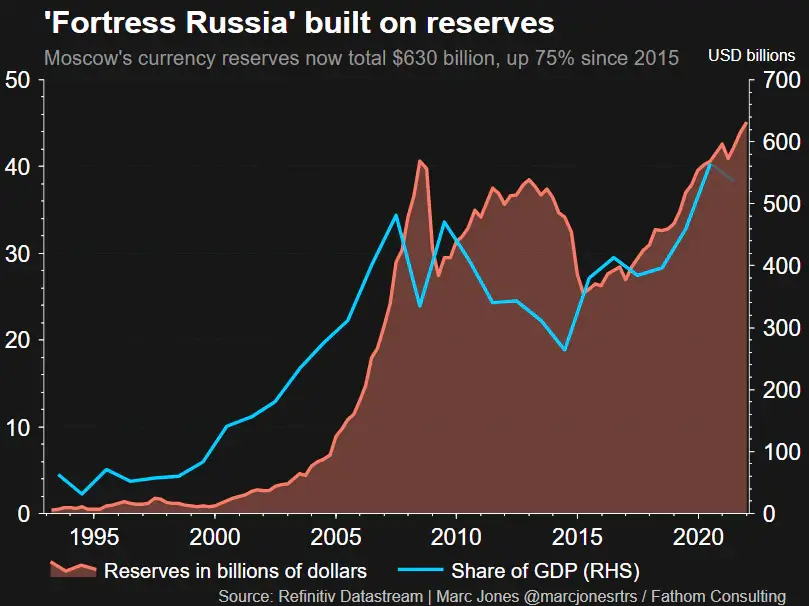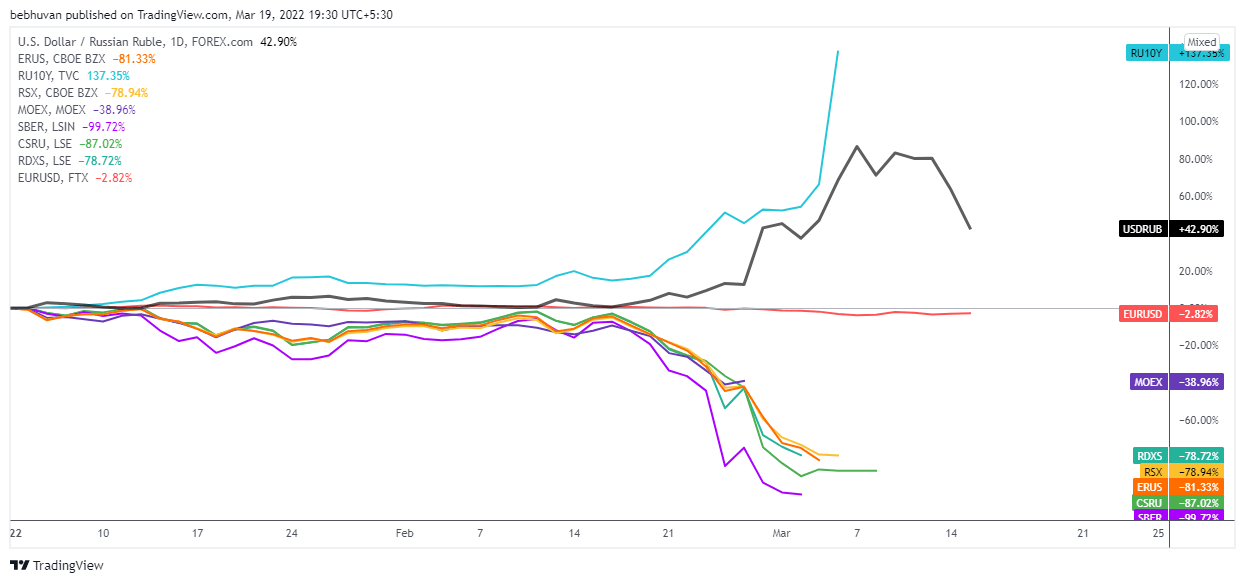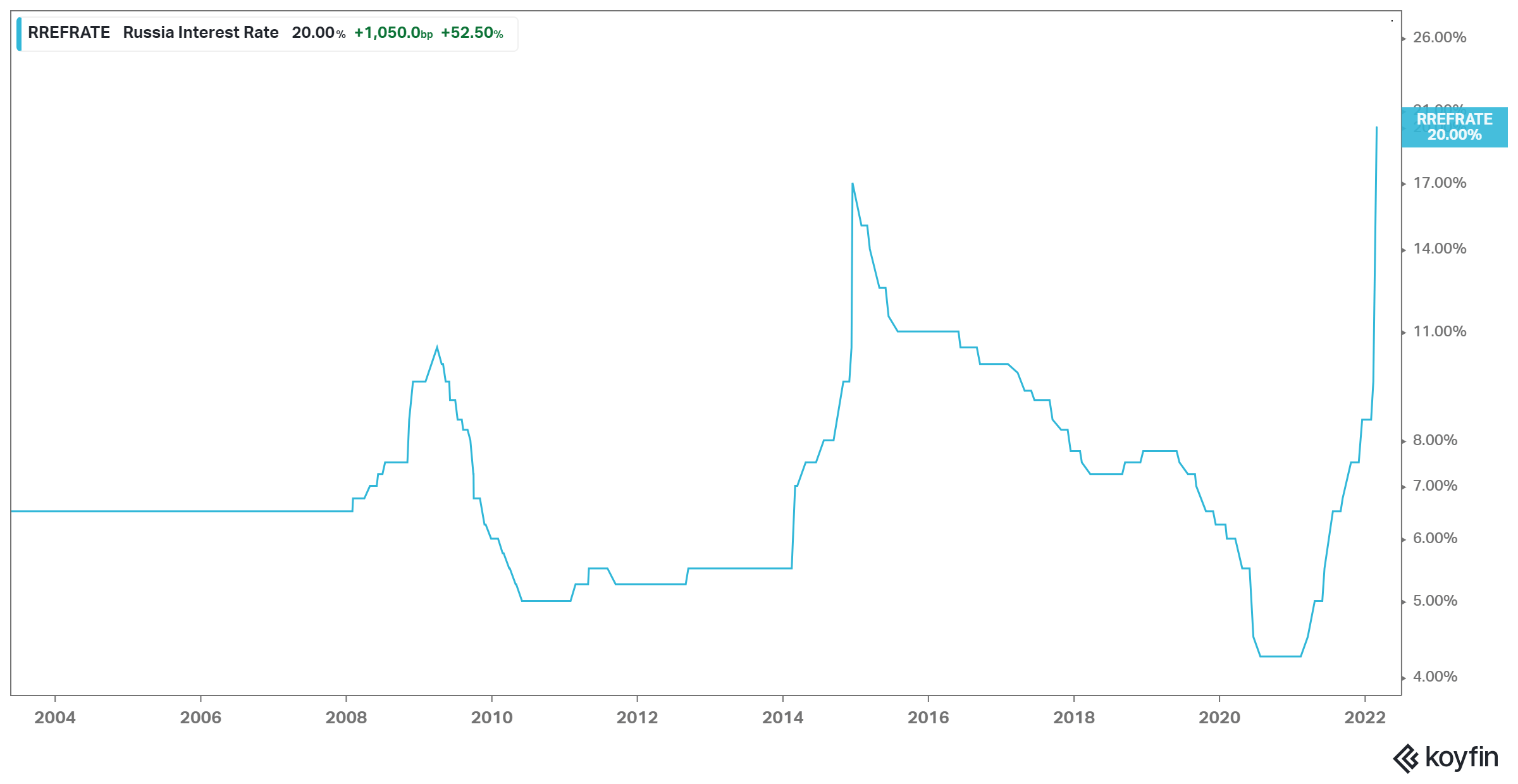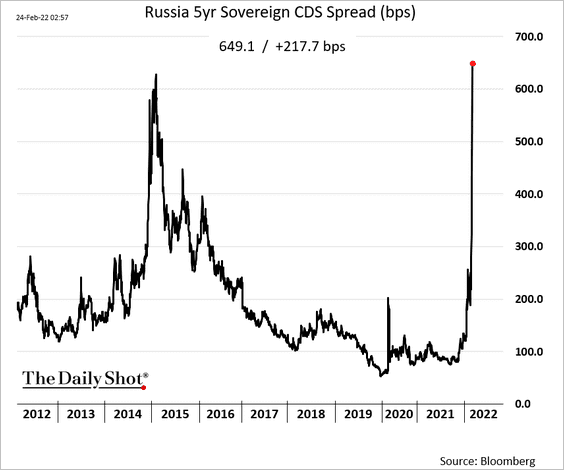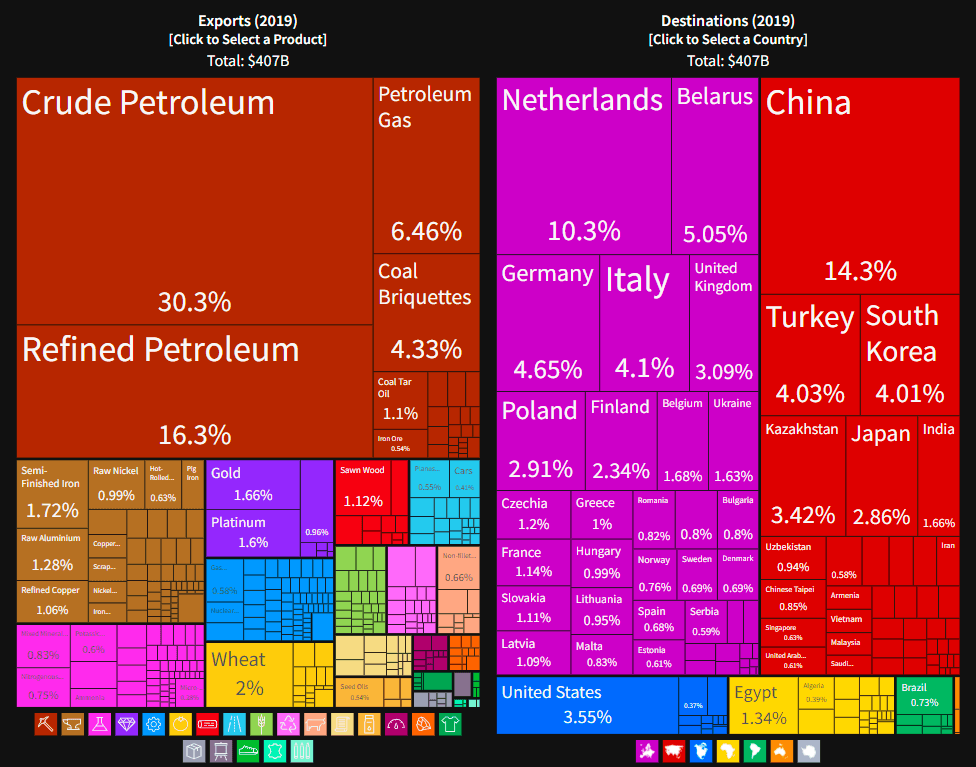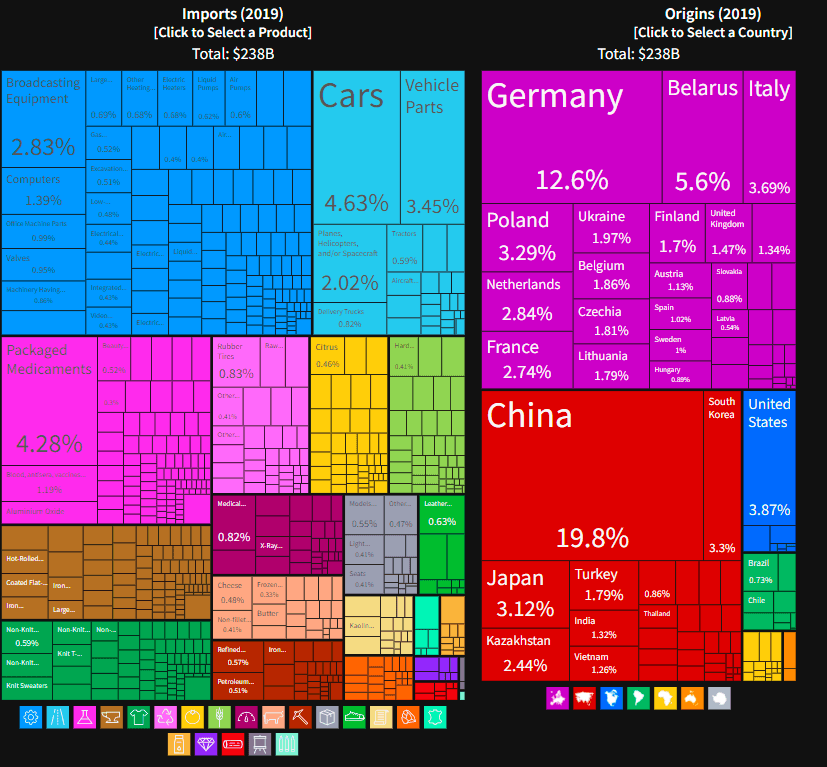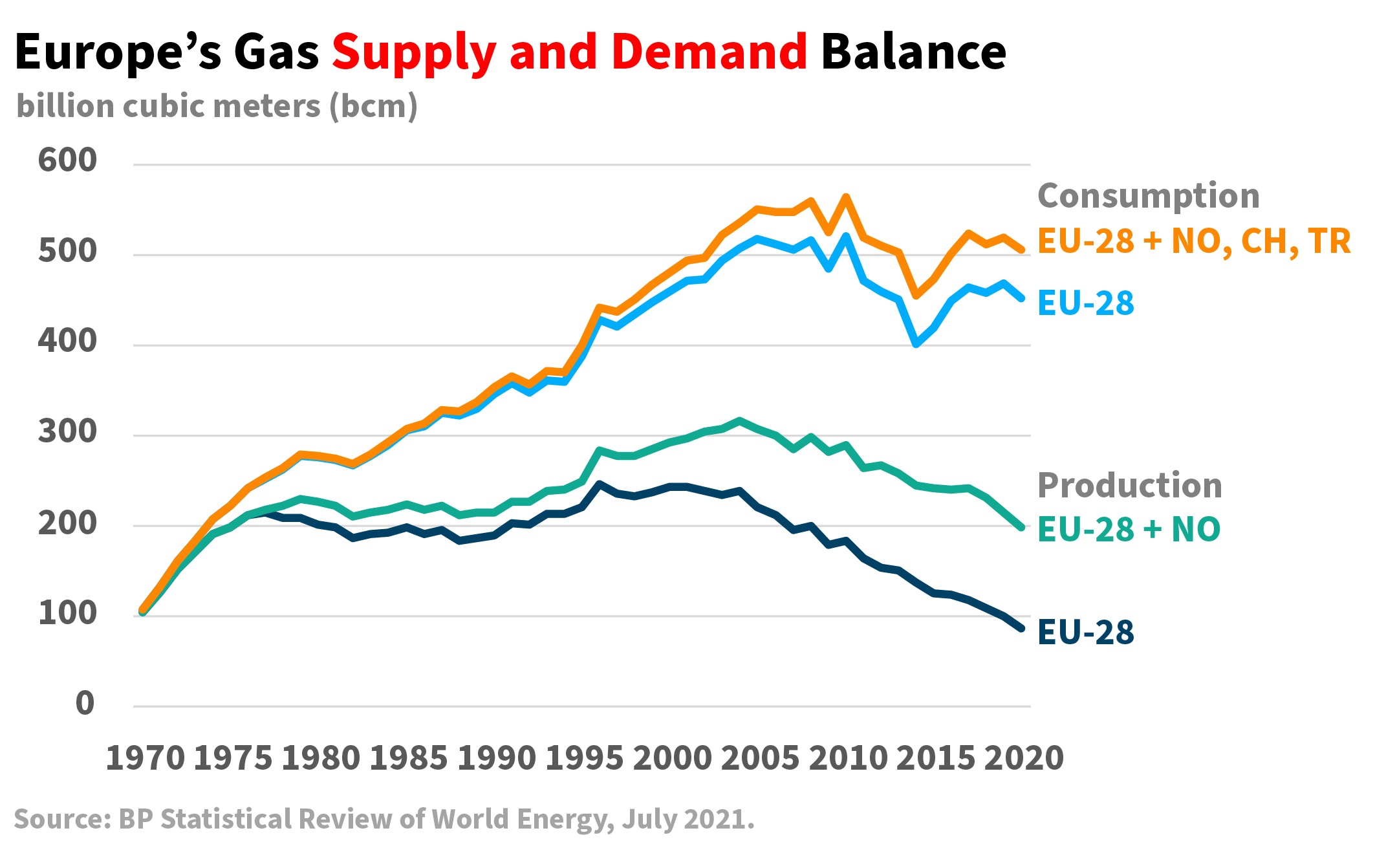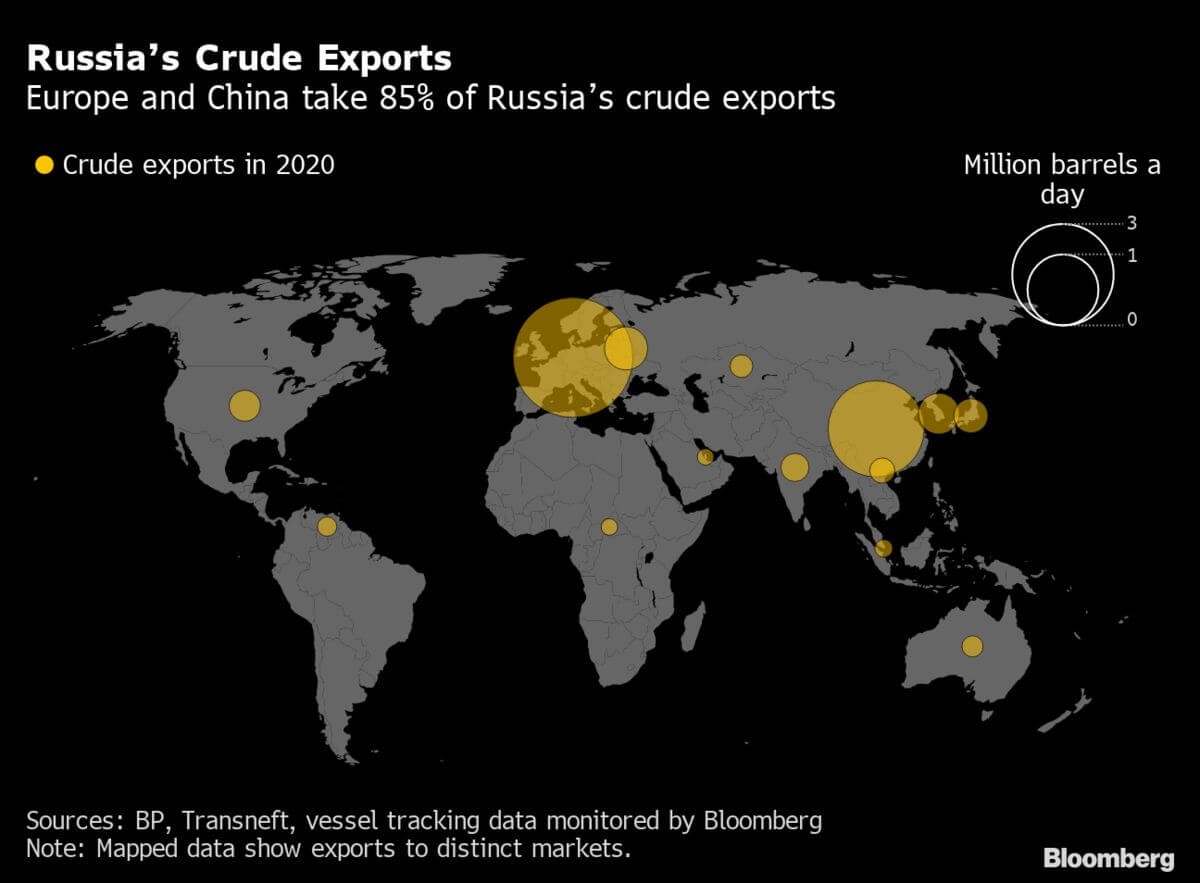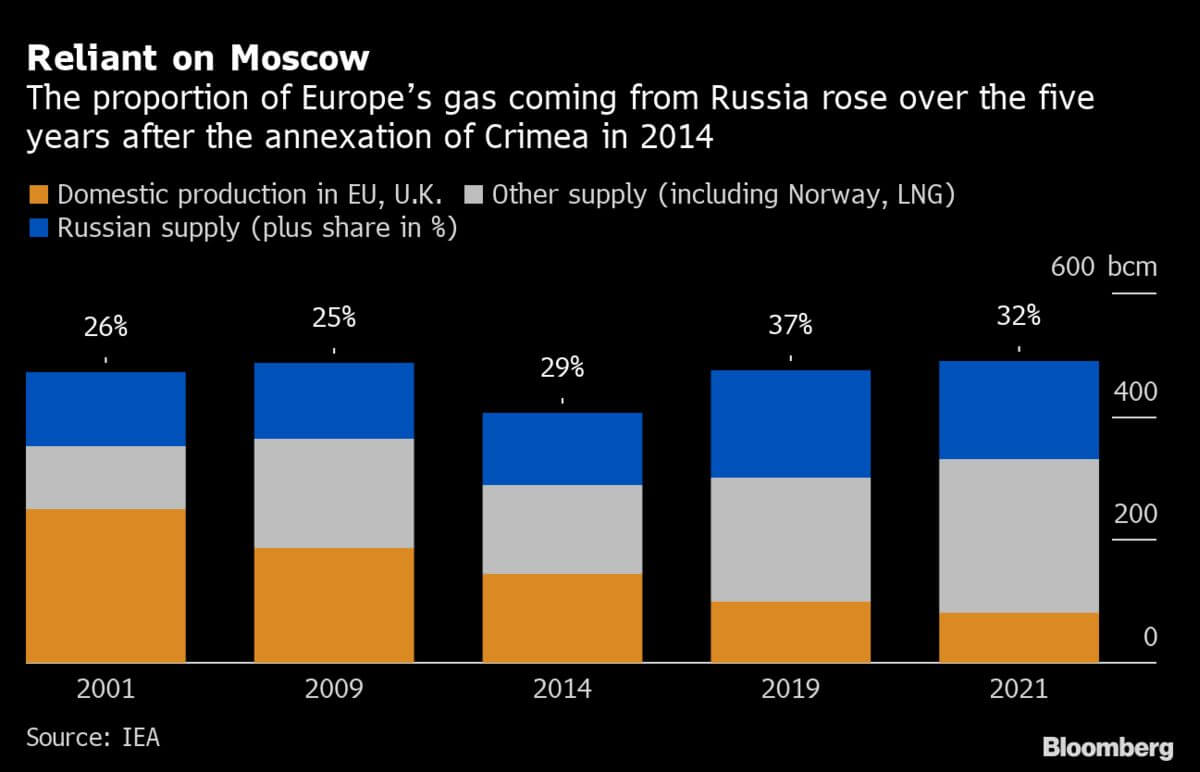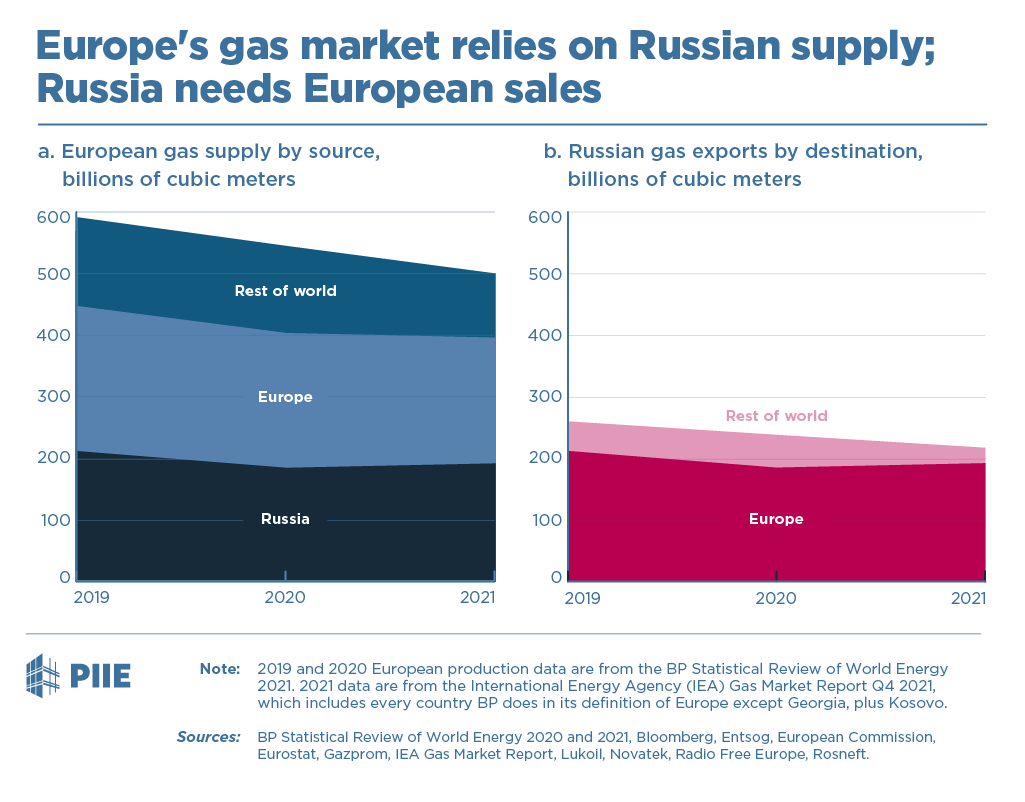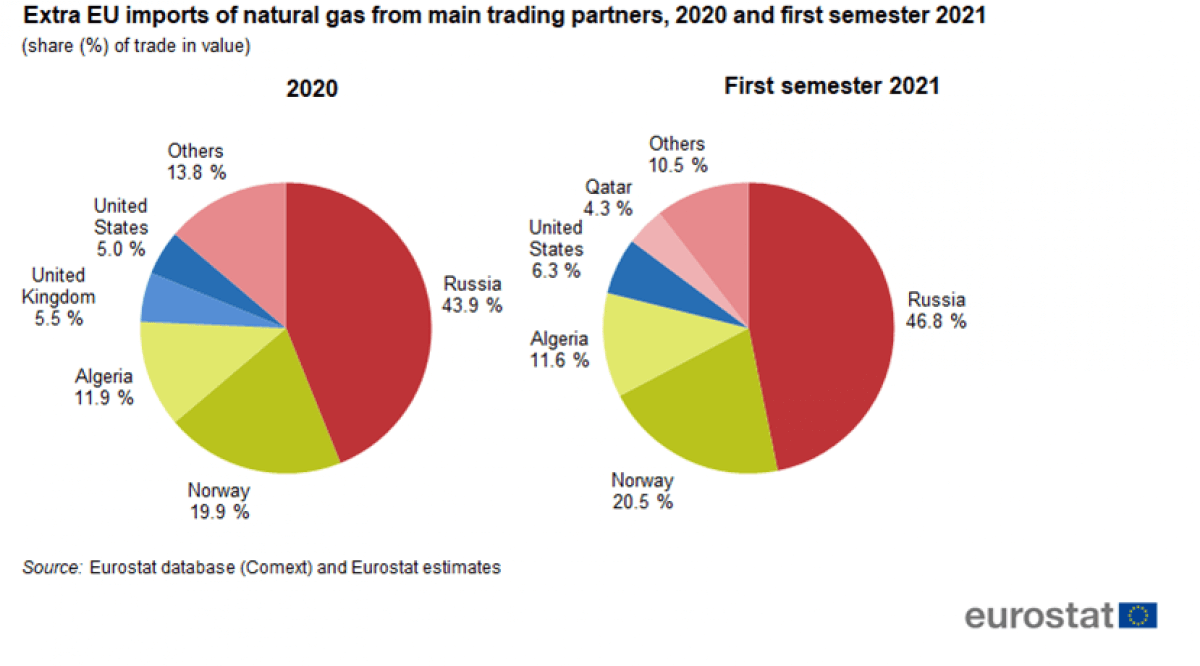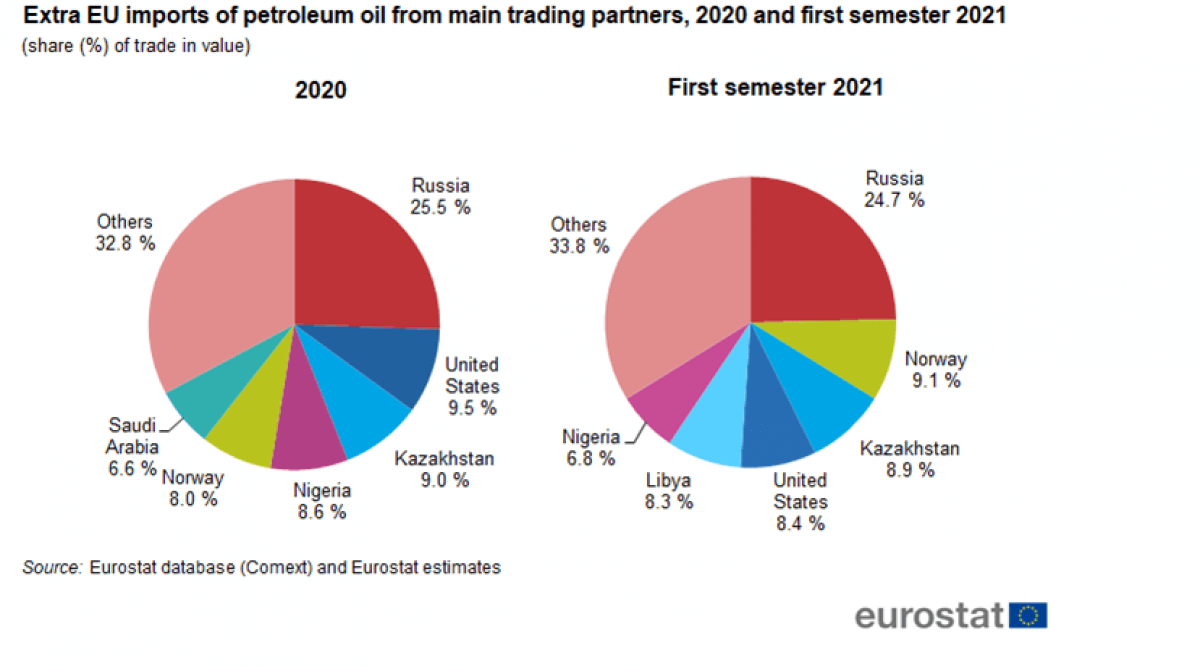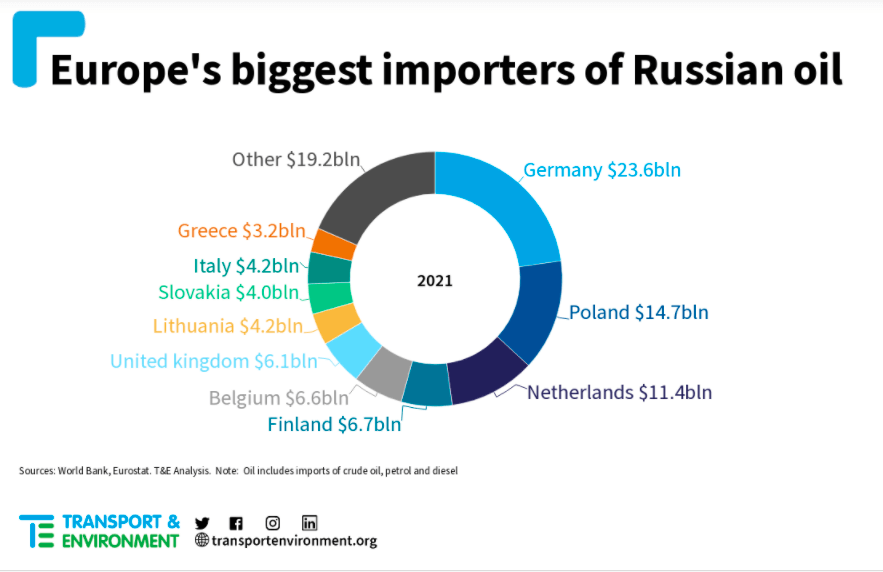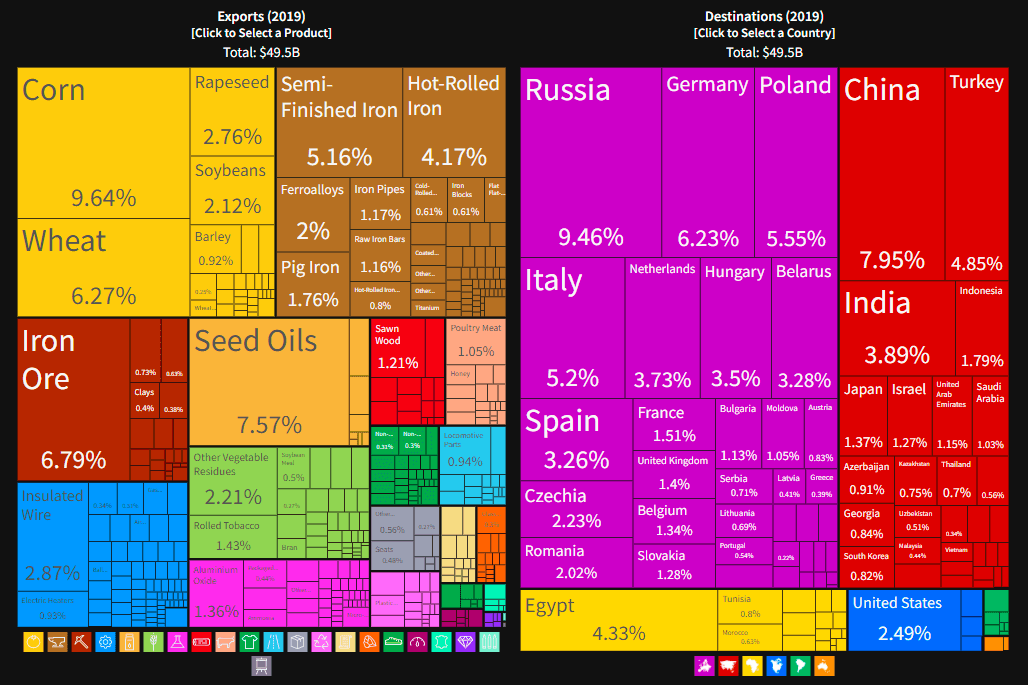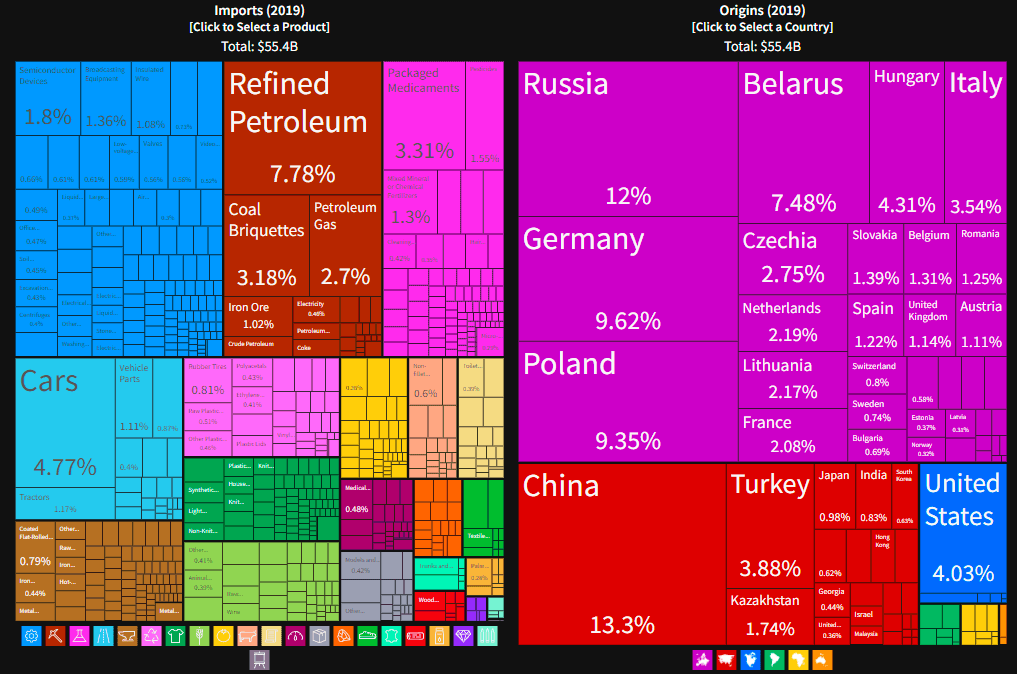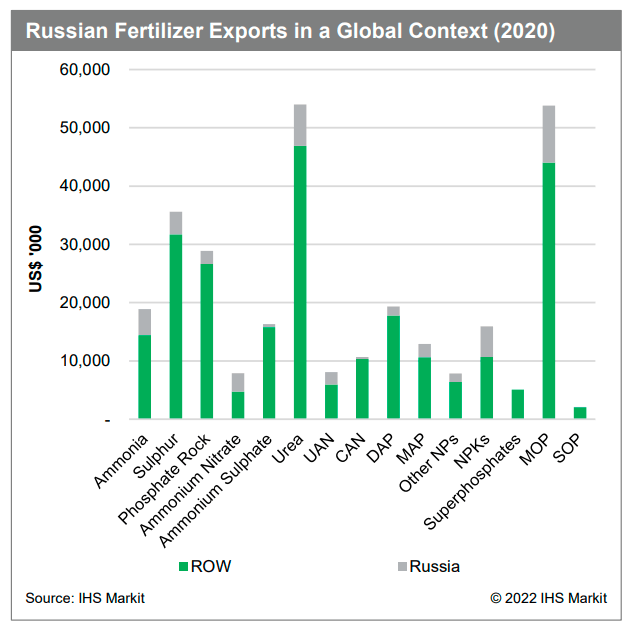If you had the power to bring back someone from the dead, who would it be? I’m guessing a dear one, favorite actor, musician?
Not me. I’d bring back that Chinese guy who cast this curse:
May you live in interesting times!
Not because I like the dude. No! It’s because I want the pleasure, the ecstasy of killing him. I wouldn’t kill him quickly by stabbing or shooting him, either. Oh, no! I’d take my time. First, I’d push him from a second-floor building; I want him to be injured, not dead. Then, I’d blindfold him, make him run in the middle of a street, and hit him with a TVS 50. Then I’d run over his legs with a bicycle—remember, the goal is to kill him slowly. Then I’d make him watch terrible Kannada movies nonstop as he is writhing in pain. Lastly, before I kill him, I’d intermittently play Justin Beiber’s Baby in repeat while he tries to sleep. Finally, I’d stab him repeatedly with a pencil and kill him.
In just a few weeks, we went from dunking on Cathie Wood to World War 3. We certainly are living in interesting times, aren’t we? It’s 2022 and yet the great powers sometimes still choose to play Sid Meier’s Civilization in real life. This time, Russia decided to invade Ukraine. This is the biggest conflict in Europe since WW2, and the fallout is getting worse by the day.
Nobody knows what the outcome of the conflict will be, but given the response of the Americans and the Europeans, it’s abundantly clear that the conflict will have far-reaching geopolitical and economic implications. We’re already seeing historic firsts—unprecedented economic warfare, historic shifts in foreign policy positions especially by the Germans, rapidly soaring food and commodity markets among other things.
While it’s impossible to get a clear picture of what’s happening, it’s important to at least have a sense of what’s unfolding in Ukraine, given that this crisis will indelibly alter our world for the years to come. It also isn’t about whether Putin is bad or if the Americans are good. Such binary and moralistic thinking doesn’t help. It’s just having a sense of what’s happening, we can jump to moralistic conclusions later.
I’ve been trying to make sense of this tragedy and thought I’d share whatever I read, watched, and listened to over the past few weeks.
What ostensibly seemed like a cakewalk for the Russians has quickly become a nightmare for them. This is an existential crisis for both the Ukrainians who have mounted a heroic resistance against a far superior aggressor against all odds and the Russians. For Ukraine, it’s a fight for Independence, and for Putin, it’s a fight to save face enough to continue posting macho topless pictures.
In response, the West has unleashed economic warfare on an unprecedented scale, and no, I’m using the term __lightly. Russia had been building up its foreign exchange reserves to withstand economic shocks. They grew the reserves from ~$380 billion to ~$630 billion. The reserves were in foreign currencies like the Euro, Sterling, Dollar, Yuan, Chinese bonds, and nearly 2300 tons of gold.
The Americans and the Europeans not only cut off select Russian banks from the SWIFT, the backbone of global banking but also seized the Russian central bank reserves in their jurisdictions. Cutting off Russia from SWIFT itself at one point was considered the “nuclear option”, but the West went one step further. The Americans had frozen access to dollar reserves of smaller basket cases like Iran, Afghanistan, Venezuela, and North Korea but never a large economy like Russia.
Crumbling fortress
The fact that Russia had built a reserve chest of ~$630 is one probable reason why Putin was emboldened to invade Ukraine. Since the western sanctions in 2014 over the annexation of Crimea, Russia had painstakingly built up its reserves, dubbed “fortress Russia.” In 2014, it had to draw those reserves to defend the Ruble. From 2018 to 19, Russia also got rid of pretty much all its US treasury holdings and started deploying the money in the FX swaps market.
These FX swaps to the tune of $200 and Russian private sector deposits to the tune of about $100 in foreign banks are most likely now frozen. These calculations are from Zoltan Pozsar’s recent note:
Other than the roughly $200 billion in FX swaps, the Bank of Russia and the private sector have claims on foreign banks in the form of deposits in the amount of about $50 billion each – most likely a mix of euro- and U.S. dollar denominated deposits, which is how we arrived at the $300 billion total above.
Consider for example if funds get frozen through sanctions – an event that would turn a surplus agent into a deficit agent, which in turn would lead to missed payments, much like the onset of Covid-19 led to missed payments and turned surplus agents into deficit agents. Some version of such flows are something the market should discount. Alternatively, consider the notion that… …if you owe the bank $1 million, that’s your problem, but if you owe the bank $1 billion, that’s the bank’s problem.
Global Money Dispatch, Zoltan Pozsar
In one fell swoop, the Russian central bank lost access to 40-50% of its reserves and became poorer by ~300 billion. The economic damage has been devastating. The Russian stock exchange is shut and was down 35% YTD at the last close. But you can get a sense of what would have happened if the exchange was open if you see the prices of some of the London-listed Russian stocks and US and European listed Russian ETFs. Gazprom, Sberbank, Lukoil, etc are down 90% while the Invesco Russian ETF is down 87%.
The Russian 10-year bond yield shot up from about 9% to 19.8% and Russian credit default swaps (CDS) shot through the roof. The central bank hiked the interest rate from 8.5% to 20% given that it doesn’t have the reserves to defend the Ruble. It also imposed capital controls—withdrawals above $10,000 have to be in Rubles, which are quickly becoming worthless. In about a week, Russia went from a relatively important part of the global economy to a basket case.
Fallout
Russia is the world’s 11th largest economy. It’s a small economy, but a crucial cog for the global economy in certain sectors like food and energy. 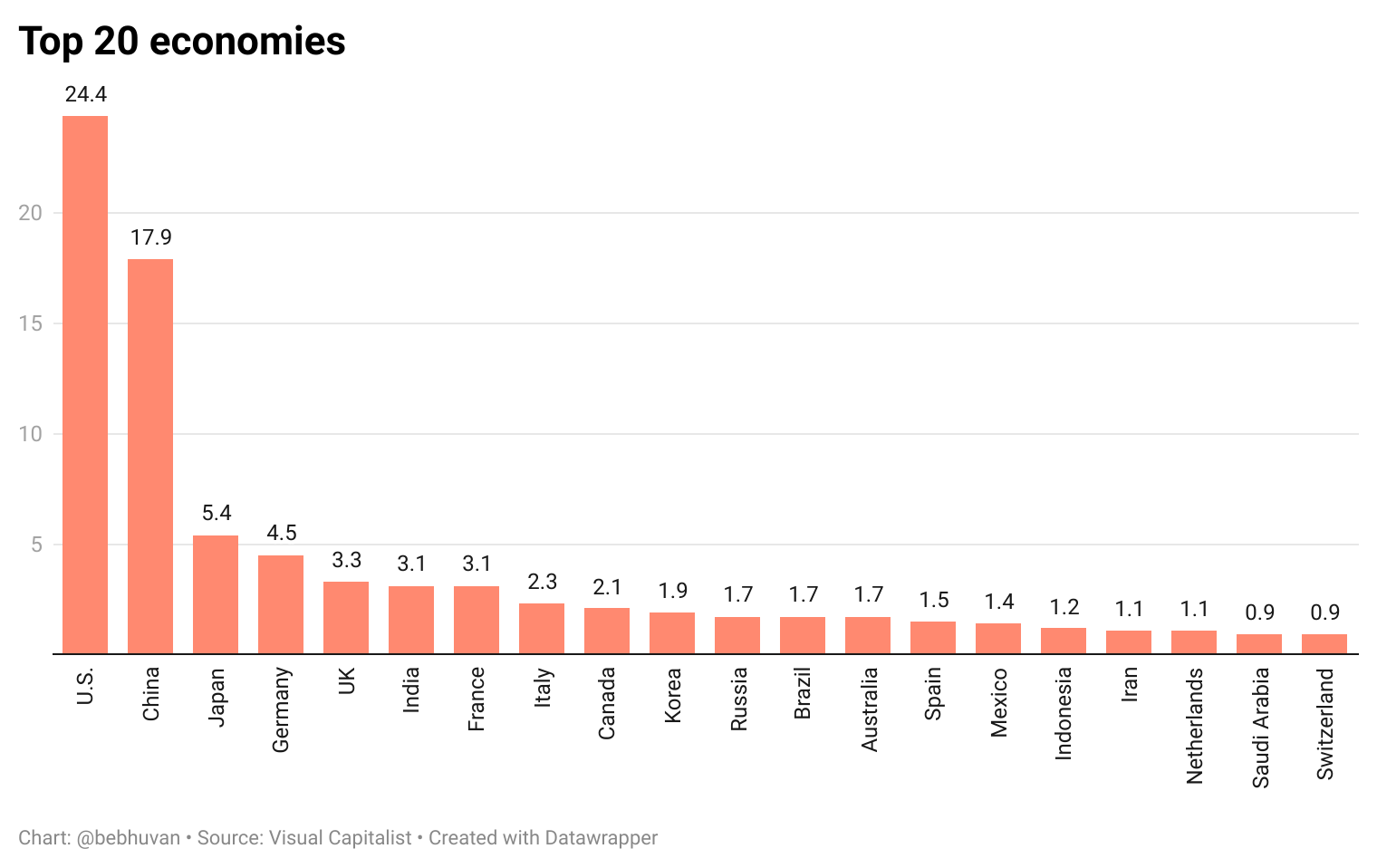
Russian imports and exports
OEC has a brilliant visualisation of Russian exports.
Top exports: Oil (59.1%), Iron and steel (4.86%), precious metals, gems and jewelry (4.38%), cereals (2.38%), wood products and charcoal (2.2%), aluminum (1.6%).
Top imports: Cars (4.63%), medicaments (4.28%), vehicle parts (3.45%), broadcast equipment (2.83%), planes and parts (2.02%), computers (1.29%).
OEC
So far, the Russian energy sector and the banks like Sberbank and Gazprom bank which process energy payments have been exempt from the economic sanctions. That’s because Europe is beholden to Russian energy—nearly half of European oil, gas, and coal imports are from Russia.
If Russia cuts off oil and gas to Europe, people will quite literally freeze to death.
Oil and gas prices would shoot up even more than they already have, and they have shot up substantially already. 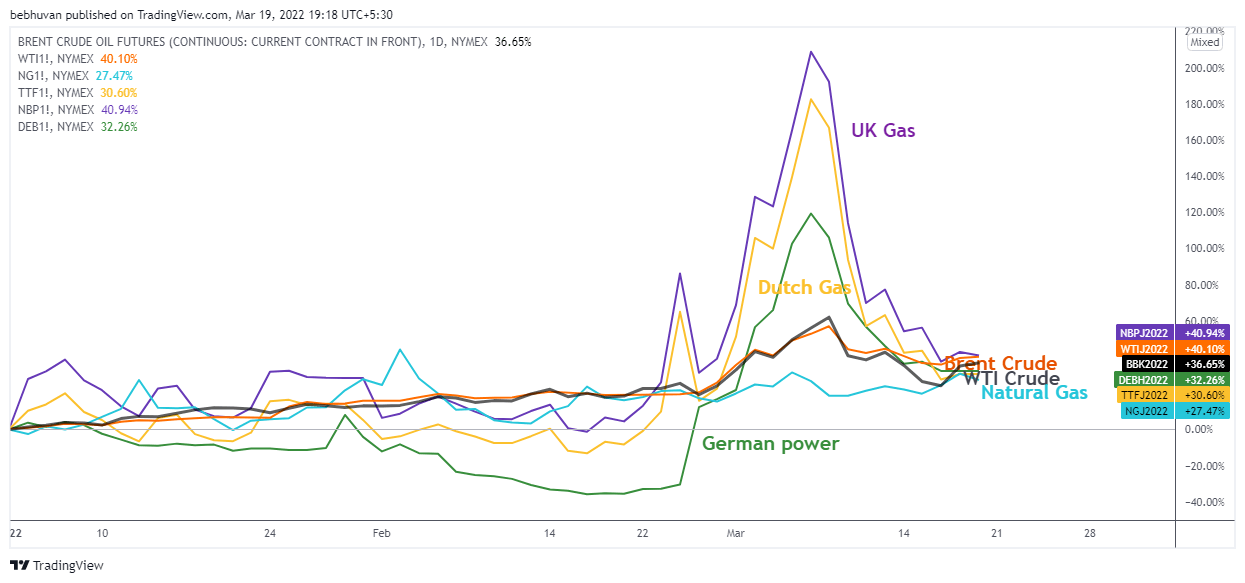
And the irony is that Russia is having a bonanza as energy prices shoot up due to the war. Given the energy flows have been carved out of the sanctions, Russia is making about $650-750 million a day.
Though the situation is dramatically changing every day, it’s very hard to imagine the Europeans banning Russian energy imports. Energy is one of the biggest components of household budgets. The reason why politicians worry about rising energy costs compared to generalized inflation is that energy consumption is front and center in everyday life—every time people switch on the heating or refuel a car or a bike, they pay and get angry because of high prices. People don’t care if it’s a supply issue or a war, they always blame the people in power for rising energy costs.
In the last few weeks, the Europeans have said a lot about reducing the energy dependence on the Russians. The situation has become so dire that US officials met Venezuelan President Nicolás Maduro a couple of weeks ago to work out an oil deal. The other problem is that the global oil & gas CAPEX is hitting record lows. 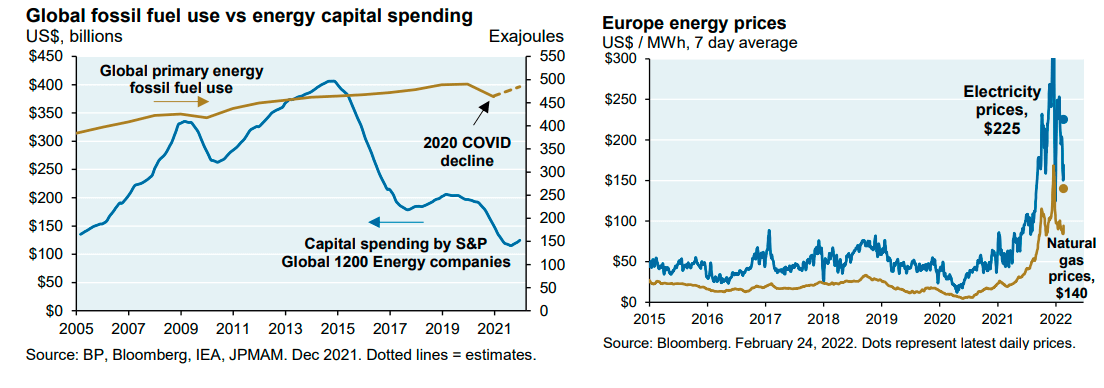
Commodities
While energy prices are getting all the headlines, Russia and Ukraine are large exporters of other commodities like coal, nickel, steel, aluminum, and other metals and derivatives. Along with oil prices, coal, and nickel prices have shot up dramatically. 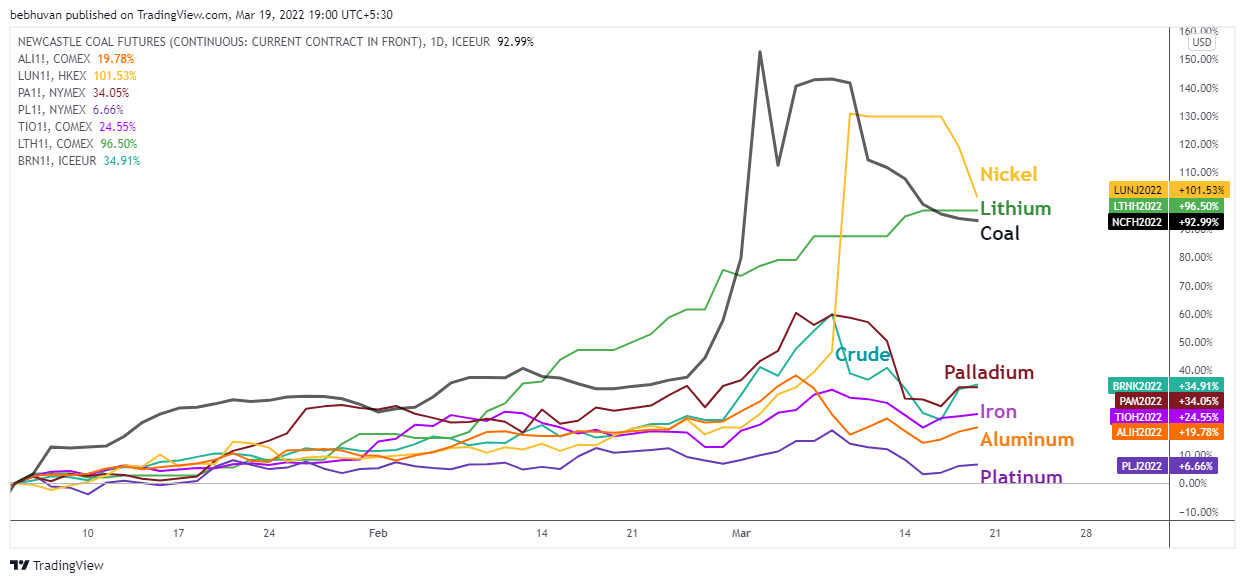
The historic volatility in the commodity markets is causing all sorts of headaches. On March 8th, there was an epic short squeeze in nickel futures on the London Metal Exchange (LME). The price of nickel shot up 250% from ~$20,000 to $100,000 and LME in a weird move decided to cancel $3.9 billion worth of trades. The heightened volatility is causing a drop in volumes and widening spreads in key commodities like crude and aluminum.
-
It’s important to note that coal still accounts for over 35% of global energy production.
-
Nickel is a crucial component in battery manufacturing, and Russia manufactures 28% of nickel globally.
-
There are other lesser-known but insanely crucial linkages. Ukraine produces 70% of neon gas, a crucial component in semiconductor manufacturing.
-
Russia exports 16% and 24% of global platinum and palladium. They are key components in electronics manufacturing. Ukraine is also a key part of the automotive supply chain, especially wiring systems, thanks to its cheap labor. The conflict has already forced BMW, Volkswagen among others to stop production.
These are some of the most obvious ripple effects. There are bound to be a lot of unintended consequences and second-order effects from the Russia-Ukraine conflict—effects that will have a tremendous impact on global value chains.
Food
Last but not the least, the conflict will have an outsized impact on food production and food prices.
-
Russia and Ukraine are the largest and the fifth-largest wheat producers in the world. They account for 23% of the world trade in barley, 27% in wheat, and 14% in maize.
-
Russia and Ukraine account for 53% of the world’s sunflower oil trade.
The problem isn’t that Russia and Ukraine are large exporters of grain, the problem is who they export to. The biggest buyers of Russian and Ukrainian wheat and other grains are poor developing countries in Africa and the Middle East. These countries are already heavily indebted, and COVID-19 made it even worse. 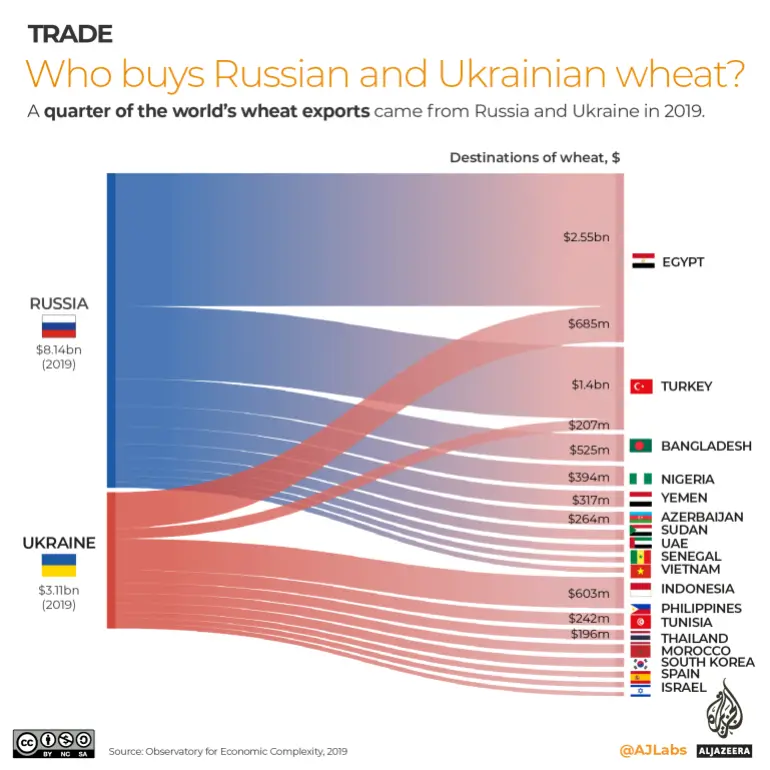
Ukraine has already banned the export of wheat, oats, and other staples.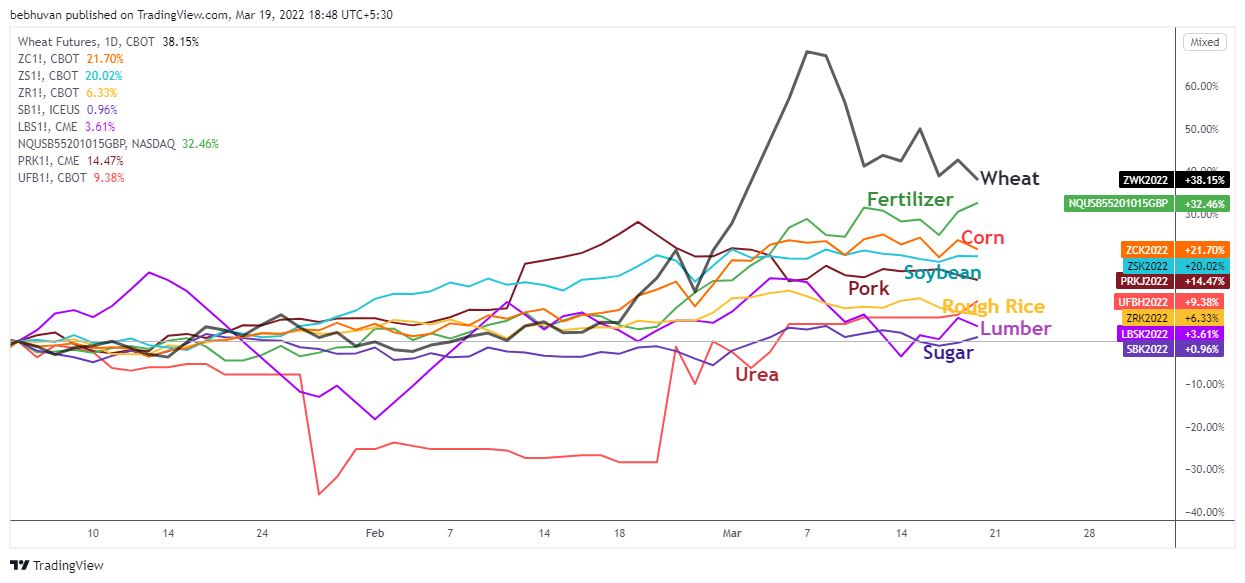
Emerging markets will take a disproportionate hit if food prices spike. 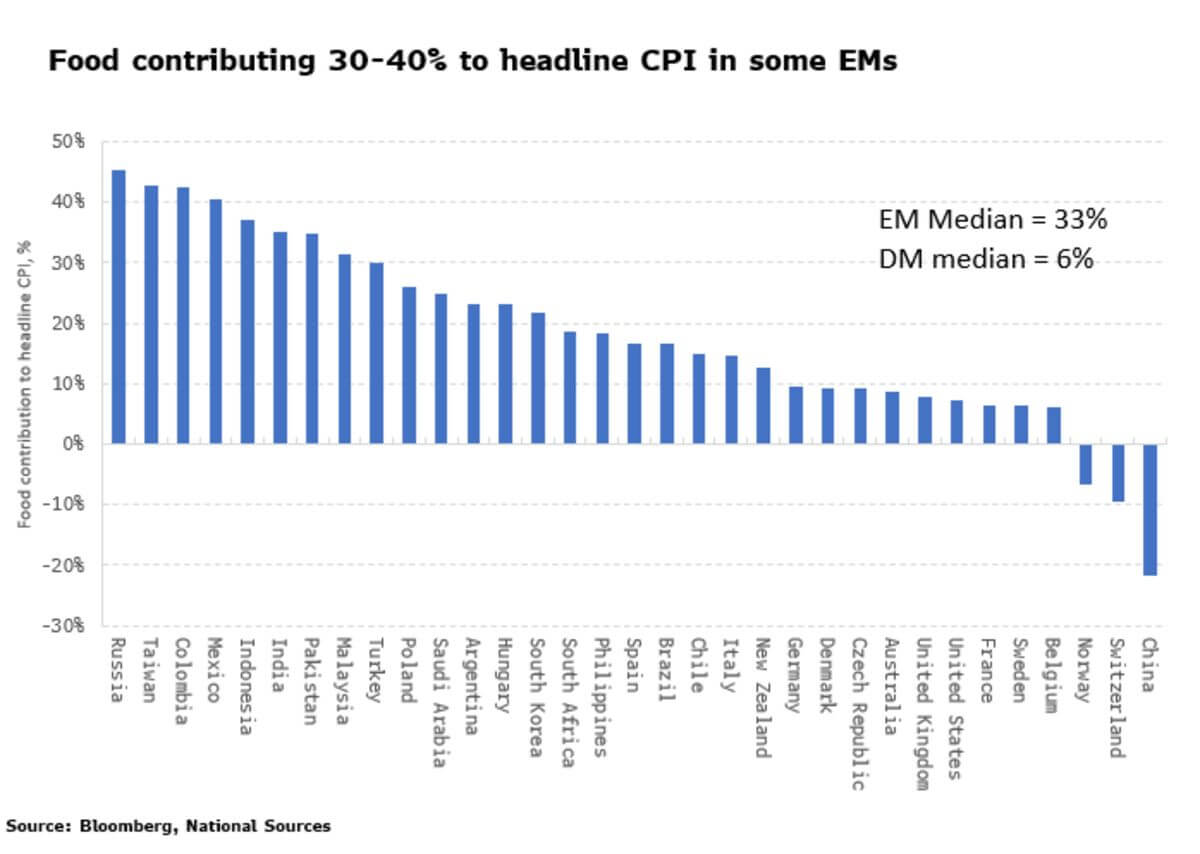
For the privileged few of us living in India or the west, it’s hard to imagine food being so important, but they can cause revolutions and topple regimes.
Protests over affordable food access are a regular feature of political economy. There was a wave of such demonstrations in 2007-2008, even before the Arab Spring began in late 2010. More generally, social movements responding to food shocks have played a powerful role in shaping modern history. Sharply rising prices were a major driver of the French Revolution. The 1848 revolutions followed several years of European drought that pushed food prices upward, and food protests not only kick-started the 1917 Russian Revolution from which the Soviet Union was born but also, in a historical irony, contributed to the USSR’s demise. More recently, food crises hastened the 1998 removal of Suharto in Indonesia.
Food Price Spikes and Social Unrest: The Dark Side of the Fed’s Crisis-Fighting
Food shortages will hit the most vulnerable of countries like Yemen the hardest. The crisis is already pushing countries to start hoarding. 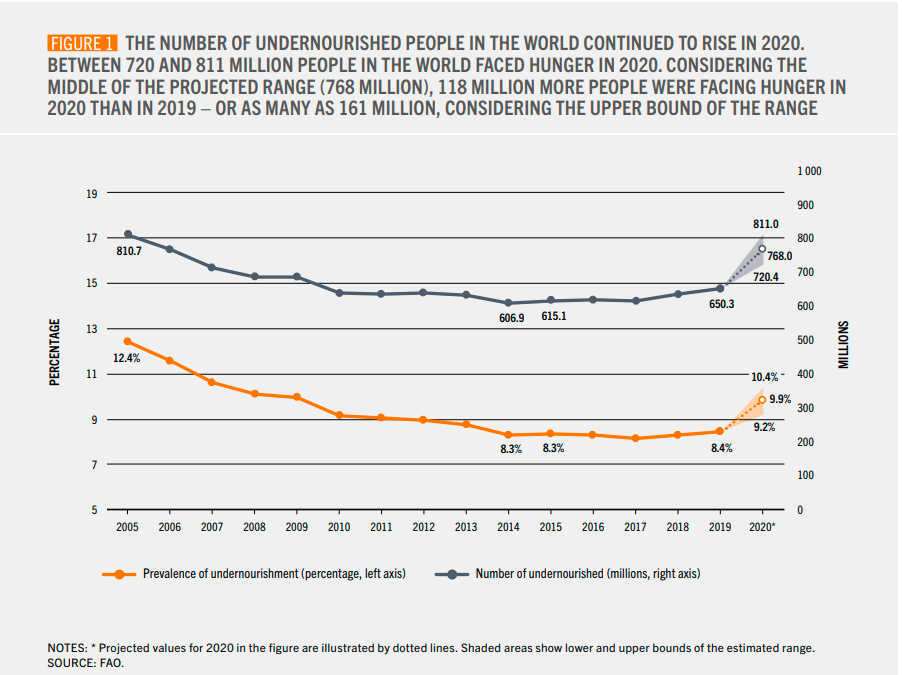
Since the Russian invasion, Indonesia has set new limits on palm oil exports to control prices. Hungary banned all grain exports last week; Serbia on Wednesday said it would ban exports of wheat, corn, flour and cooking oil. On Thursday, Egypt — a country 80 percent reliant on Russian and Ukrainian wheat — imposed controls on grain exports as the price of subsidized bread has already started to creep up.
The other worry is fertilizers. Russia is the largest exporter of fertilizers. Belarus, the other major exporter, has also been sanctioned. Belarus is essentially a puppet of Russia, and the country has become a staging ground for Russian military operations in Ukraine. The US, India, China, Brazil, and France are the largest importers of fertilizers and also key exporters of food items.
In broad terms, Russia accounts for almost 13% of global trade for key fertilizer intermediates (ammonia, phosphate rock, sulphur) and for almost 16% of global trade in the key finished fertilizers
Fertilizer prices had already been spiking even before the invasion, but things just got a whole lot worse. With Russia temporarily suspending fertilizer exports, farmers around the world are in for a rough time. Fertilizers account for anywhere between 15% to 35% of farm input costs. Rising fertilizer prices could lead to lesser use of fertilizers, lower yields, and perversely, higher food prices. The hungriest, will get even hungrier.
The impact of the conflict will inevitably feed into inflation, compounding the problem caused by strained supply chains around the world. This conflict is probably the final nail in the coffin of the inflation is transitory narrative. Transitory inflation is dead, long live transitory inflation.
Will the sanctions work?
It’s important not to overstate what sanctions can do. While sanctions will certainly kneecap the Russian economy, they will adjust to a new normal after a while, just like Iran did: 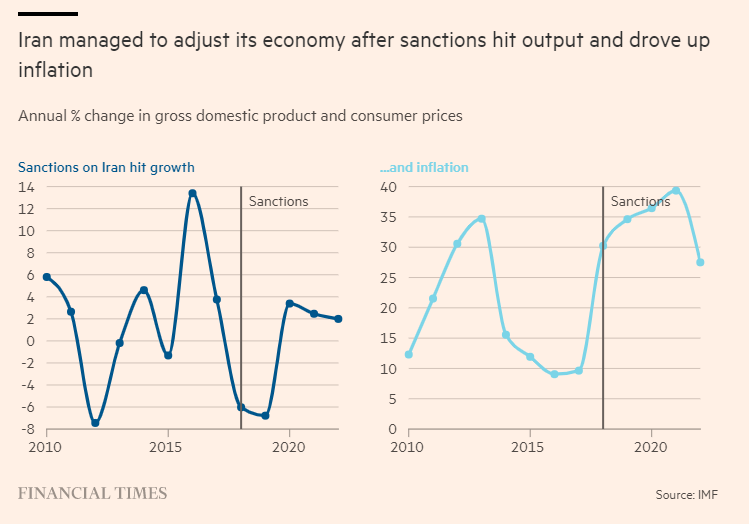
Even if Russia must accept lower prices for its oil as the markets begin to shun its crude, economists expect Moscow to be able to run a similar siege economy, using hard currency from oil and gas sales to buy imports from countries and companies willing to supply the country.
Running a siege economy: Russia prepares to endure pain of sanctions
Here’s how Julia Friedlander, a former Treasury Department official who helped design the 2014 Russian sanctions program, explained it on the Hidden Forces podcast:
A lot of what we do, implicitly do, is essentially outsource the success of our foreign policy through sanctions to the private sector because they're the ones on the front lines who actually have to say, okay, we're a bank, we're going to do everything we can to make sure that we're complying with this. Not only banks, with major compliance shops, but every mom-and-pop shop in America. Every mom-and-pop shop in Europe is technically obligated by law to implement these things.
Now you can imagine that for some who are used to this, many colleagues from the treasury department go and run major sanction shops for large banks, and they're therefore extremely helpful, but sanctions could have a single point of failure because you're talking about all kinds of financial intermediaries that are also involved in this.
And so sewing all of it up, I think we often in the public misunderstand that sanctions are leaky because they're imperfect as a tool. They're imperfect because we ask those who are not, who are obliged by law, but not by policy, to uphold them. Our private sector are not like soldiers in a war, and so that's what I think that it's often sort of a little bit misunderstood here.
Interesting times? Bloody yes! 😐
Good reads
Pausing at the precipice | I really loved this piece by Tanner Greer. He argues the West’s desire to “do the right thing” without pausing to carefully consider the consequences of their actions will end up hurting the people of Ukraine. He quotes from Michael Mazarr’s book that documents the utter ineptitude of the Bush administration that led to the Iraq war. The quotes paint a rather disturbing picture of how the Bush administration was driven more by the need to do the right thing than by WMDs or oil, as is commonly assumed. There was a stunning lack of thought about the consequences that US actions would have. Tanner writes that the same lack of consideration about the second-order effects of the Iraq invasion is evident in the way the West has rushed to impose crippling economic sanctions against Russia.
This piece is all the more important given the charged environment we are in. Anybody with anti-War or anti-Western views is labeled as a “Putin apologist” or a “commie.” But that should be a sign to seek opposing views. The central point of the post about the need to consider the unintended consequences of actions is sage wisdom.
Was it inevitable? A short history of Russia’s war on Ukraine | This is a brilliant piece by Keith Gessen tracing the long ark of Ukrainian history from the collapse of the Soviet Union to the current invasion. The thing that stands out is just how unlucky Ukraine is. From living in the shadow of a great power to wrestling with the fractured identities of its people that simultaneously look east to Russia and west to Europe, it almost feels like Ukraine is destined to keep failing. But from the rise of Cossacks to the Soviet occupation, if there’s one thing that defines the Ukrainians, it’s their unyielding will to be free.
What If Russia Loses? | Will Putin win? Liana Fix and Michael Kimmage write that there’s no victory for Putin in Ukraine. His options are to commit the Russian army to an occupation, annex large parts of Ukraine and install a puppet regime while dealing with an insurgency, or model Ukraine into an autocratic regime like Belarus. He also runs the risk of Russian public opinion souring and has to deal with an economy that’s reduced to rubble. So, Putin really doesn’t have a way out.
The Return of Containment | Now that Ukraine or large parts of it are most likely to be occupied by Russia, what should the West do? Ivo Daalder writes that the only real way to deal with the Russians is now to bring back the containment playbook similar to the one used in the 1940s against the Soviet Republic, but with the modern complexities in mind—namely the Russia-China friendship. He says that to contain Russia, Americans, Europeans, and NATO must spend heavily on military and beef up the presence in Eastern Europe. The West must also work with allies across the world to ensure tight enforcement of the sanctions and squeeze. The Europeans also must do whatever it takes to end their energy dependence on Russia. By doing so, they can inflict an even greater economic cost on the Russians.
Why Strangling Russia’s Economy Could Backfire | Maxim Mironov writes that the crippling economic sanctions risk turning Russia into “something like a larger, more unstable, and more dangerous North Korea.” Sanctions will impose a heavy cost on ordinary Russians and will lead to severe shortages of everything from basic goods to critical industrial components. The maximum economic pressure campaign could backfire and Russians will end up resenting the West, further cementing Putin's rule. Instead of sweeping sanctions, they should squeeze the oligarchs and other Russian officials.
The Bleeding Victor (Part One) | The common narrative is that except for oil, the West will suffer less compared to the economic damage they’ve inflicted Russia, but Pippa Malmgren argues otherwise. She writes that Putin might be losing the battle of public perception, but is inflicting extraordinary damage on the West and the global economy at large. Russia is among the world’s largest producers of oil, palladium, nickel, wheat, and fertilizers. The prices of all these commodities have risen dramatically and are leading to runaway inflation and destabilizing financial markets. The economies of European countries like Germany and Italy have sizable exposure to Russia, and the West’s response all but guarantees a debt contagion
She also thinks that given the fact that Russia and Russian puppet Belarus are the largest producers of fertilizers, Putin is set to unleash a global famine that will disproportionately hurt the poorest African and Middle East countries.
Who’s to blame for the current crisis?
Why John Mearsheimer Blames the US for the Crisis in Ukraine | On the one extreme, you have scholars and historians like John Mearsheimer. He thinks the West is squarely to blame and traces the origin of the conflict back to 2008 when NATO expressed support to Ukraine and Georgia’s NATO aspirations. This, he says, was a clear red line for Russia. If the United States can’t allow Chinese friendly Canada and Mexico, why would Putin be ok with a NATO friendly Ukraine housing missiles pointed at Moscow? He argues that when you are neighbors with great power, you mustn’t antagonize them and that the destiny of smaller countries is always determined by great powers.
“Fuck it!” Russia’s Final Break With the West | Niccolo Soldo shares John Mearsheimer’s view. He thinks that Ukraine is a pawn in America’s game to cut off Europe from Russia and isolate it. The bonus is that the Americans can cash in by exporting gas and weapons to the Europeans. He says that the Americans couldn’t care less if Ukraine is occupied by Russia. They’d be happy to see the Russians get stuck in an Afghanistan-like insurgency.
Putin YES!, Putin NO!, US Empire 100 Years Ago, Orban and the Challenge of the War in Ukraine, Led Zeppelin and How They Came To Be. The most interesting point from this piece is the cognitive dissonance of Americans. Most Americans think that they’re a republic, while the rest of the world considers America as an empire. The fact that the Americans consider themselves as a republic probably is a way of giving themselves mental cover to meddle in the affairs of countries across the world, foment dissent, and overthrow governments.
The Crackpot Realism of America, Russia, and Ukraine. Ross Barkan writes on the same lines as the pieces above.
The American Pundits Who Can’t Resist “Westsplaining” Ukraine | On the other extreme, you have people like Jan Smoleński and Jan Dutkiewicz argue that just blaming the US and NATO is an extremely misguided and reductive view of the realities of Eastern Europe. To say that NATO is to blame is to deny the agency of these countries. They write that Eastern European countries like Hungary, Poland, Czechoslovakia were subject to brutal Soviet occupation. In the case of Ukraine, it’s even worse. Joseph Stalin unleashed a deliberate famine that killed anywhere between 3-12 million people. Several European countries deliberately sought NATO membership because they wanted security against Russia and a taste of the prosperity of the West.
The Weakness of the Despot | Historian Stephen Kotkin disagrees with Mearsheimer and the others and says that the West and NATO aren’t to blame. He goes to the other extreme and says that the fact that NATO expanded puts the West in a much better place to deal with Putin. He says that Russia has always been a “weak great power” and its ambition to be recognized as a great power on the global stage has never matched the ground realities.
He says the reason why Putin has maintained his grip on power for so long is that he knows the power of a good story. A brilliant point he makes is that censorship isn’t just about suppressing information, but also about spreading stories that Russian enemies like NATO and IMF want to destroy it. As long as money (oil) gushes out of the ground, Putin can buy the cooperation of people in power and doesn’t have to bother about the ordinary people.
How Sanctions on Russia Will Alter Global Payments Flows | The other major debate has been over cutting off Russian banks from the SWIFT messaging system. But is Russia completely cut off, and does it have no alternatives? No, the total Russian banking system isn’t completely cut off. The sanctions specifically excluded certain Russian banks that process energy payments for Europe’s energy purchases from Russia.
Robert Green writes that as long as some Russian Banks are still connected to SWIFT, Russia can manage to soften the blow. The reason why the west has been reluctant to completely cut off the Russian banking system from SWIFT is because of Europe’s Russian energy dependence and worries that Russia would run straight into China’s warm embrace. Also, Russian banks would no doubt be connected to China’s Cross-Border Interbank Payment System (CIPS) and can use Renminbi payments.
The West Has Declared Financial War on Russia. Is It Prepared for the Consequences? | This is a really interesting piece on the realities of using sanctions to discipline nation-states and effect change. Julia Friedlander captures the dichotomy between the expectations of policymakers and the realities of using sanctions really well. While policymakers want immediate results from sanctions, that has rarely happened. From bringing down the apartheid, the Soviet Union, and forcing Iran back to the negotiating table, sanctions take years and decades to work. She writes that whether sanctions can force Putin to change will determine the effectiveness of sanctions in the future. If Putin is still able to maneuver despite the economic costs, the use of sanctions in the future will probably reduce.
Adam Tooze | I have a feeling there might 5 Adam Tooze’s. I don’t know of anybody else who can write so prolifically. Adam Tooze is one of the smartest historians of our generation and is also the author of must-read books like Crashed and Shutdown. Adam has been writing prolifically about this evolving tragedy. If I start linking individual pieces, this post will be full of his links. So, I’ve linked his newsletter instead.
Good listens
There are countless talking heads saying all sorts of things and making all sorts of predictions. I’ve been listening to a few to get some sense of this conflict and Samo Burja is without a doubt one of the more insightful commentators I came across.
A few interesting points from the conversation:
-
This isn’t a disaster for the Russian military yet
-
China is more than able, but might not yet be willing, to take advantage of the economic destruction unleashed by the west in Russia.
-
More and more countries will turn to China in the future.
-
War is messy. If you had smartphones in 2003 during the US invasion of Iraq, you might have concluded that the US was losing because they were best with all sorts of problems.
-
Based on the US military doctrine, the Russian invasion might seem like a disaster given the heavy losses, the stalled forces, and equipment malfunction etc. But you have to judge the situation by Russian standards. The Russian military is willing to take heavy losses, that’s how they operate.
-
The Russians hoped for better, but that isn’t to say that the Russian military has failed. It’s hard for people to consider the fact that Russia is perfectly competent.
-
The fact that Russia dared to invade a country shows that the West has grown weak, and US hegemony is over.
-
India and other countries haven’t joined the sanctions. So, this isn’t a global opposition to Russia but rather a significant power block, i.e., the west.
-
Russia is trying to build an imperialist empire based on economic and security concerns. Russia can’t afford to let Ukraine join NATO because that would mean offensive weapons in Ukraine that can hit Russia in a few minutes. There’s no reason to believe western promises that they won’t station such weapons close to Russia.
-
NATO is not benevolent. Both NATO and Russia are engaged in imperialist expansion based on irresolvable security concerns.
-
This situation was inevitable. It’s not that this particular war was inevitable, but some sort of clarification of the situation of Ukraine was inevitable. It could’ve been either a Russian-backed coup to restore a pro-Russian govt or NATO admitting Ukraine and quickly moving troops.
-
I don’t think Russia is messing up this invasion badly.
-
The West doesn’t have diplomats of the same caliber as Henry Kissinger that could’ve navigated and maybe avoided this situation. Zelensky was shit at diplomacy, but excellent at PR after the war started.
-
Did NATO provoke Russia into this conflict? NATO hasn’t done anything to avoid conflict.
-
The Western leaders still think Russia is weak and ready to implode. These are the same people who bungled Afghanistan and Iraq. The Western leaders are more deluded than Putin.
-
Putin isn’t growing insane. He’s isolated because he’s scared of being targeted by a bioweapon based on his genome. He’s he’s avoiding people because of that.
-
It’s very difficult to avoid media bias. In a charged environment like this, you won’t care about war crimes of your side because you support your country.
-
Russia might occupy 70% of Ukraine, leaving a rump of a state in western Ukraine. They’ll create puppet states like Luhansk and Donetsk.
-
The Russian information environment is disconnected from reality, but it’s the same in the West.
-
The conventional wisdom is ignoring Russian willingness to take casualties.
-
This war is not worth it for Russia, but that depends on whether the West is in decline. If the West is still strong, this war is a huge disaster for Russia. But if the West is in decline, this would be the beginning of a bank run on the Western security umbrella and the western financial system.
-
There will be fallout from Russia being cut off from the global economy. If Russia shuts off gas to Europe, it would mean long term deindustrialization of Europe and impoverishment of Germany, Britain and France.
-
The notion of enlightened self-interest—the economic costs of any military adventures would be costly, is dead. The desire for war has always been disconnected from economic realities. Pre-WW1 was the peak of globalization, yet people went to war that destroyed Europe.
-
The global economic and financial system will never be the same now that the West has shown that it is possible to disconnect an entire economy from the global economy.
-
Countries will start developing their own alternatives to Facebook, Twitter etc. There is no reason for countries like India to trust the west.
-
India and China are the new rising powers and Russia, no matter what happens in this war, was already in decline.
-
If we really want countries like Ukraine to have western values, the West should help them develop their own independent security and foreign policy and not retrofit them into the western value system.
-
Russian standards of living will decline severely, but they can withstand it, like Iraq and North Korea. Sanctions don’t immediately topple regimes.
-
Russia will increasingly depend on China. It’s not in China’s interest to see Russia fail.
-
The result of this conflict would be high energy prices and deindustrialization of Europe. The US will do well and China will come out stronger.
-
Chinese and Russian interests are different. China might just do the bare minimum to help China. A Russia in a position of the maximum dependence on China is what the Chinese want.
-
A military conflagration over Taiwan is inevitable.
The history of Ukraine and what it means to be a Ukrainian
In the run-up to the invasion, Putin published a blog post saying that Ukraine wasn’t a real nation and that it was always a part of Russia. This flawed view of history is at the heart of the conflict, Putin has used to justify the invasion. You gotta admire the creativity of dictators and autocrats when it comes to creating alternate realities. I did some reading and listening over the past couple of weeks to get a sense of the history of Ukraine and Russia. It doesn’t take much to quickly realize that Putin’s version of history is nonsense.
It’s important to understand that the history of Ukraine is heavily contested and subject to vigorous debate—nobody agrees on anything. There are a lot of competing historical narratives about the origins of Ukraine. This history is also heavily colored by ethnic, religious, and nationalist considerations—propaganda even. History after all is a narrative constructed in between the gaps of facts and evidence. But anyway, the ancient roots of Ukraine and Russia are fascinating, to say the least. Here’s a truncated version of Ukraine’s 1000-year history.
Serhii Plokhy, in his book The Gates Of Europe, traces the history of Ukraine all the way back to Herodotus, the father of history. Herodotus had written about the Scythians who inhabited parts of modern-day Ukraine in the fifth century. Around the 6th century, the Slavs started settling around these regions along the Dnieper River. The origins of Ukraine, Russia, and Belarus can be traced all the way back to this time period.
Around the late 7th, 8th and 9th centuries, the first wave of Vikings started raiding and conquering parts of Europe including Britain, Ireland, and Scotland. Around this time, Vikings called the “Rus” started traveling down the major river routes like the Volga and Dnieper rivers from Sweden, Denmark, and Finland started settling in lands belonging to modern-day Russia and Ukraine. People often take the term “Rus” to mean Russia, but that isn’t the case. Its meaning has evolved over centuries, and the usage of the word has never been constant.
One version of the history is Vikings demanded tribute from northern Slavs and Finns. They paid the Vikings initially, but later fought the Vikings and drove them out. But after a battle, the Slavs had internal discord and invited the Vikings back to rule over them. Three brothers Rurik (Ryurik), Sineus, and Trevor obliged and settled in Novgorod, Byeloozero, and Izborst. But this version of history is contested.
In 882 Oleg (Helgi) or the Rurik dynasty conquered Kyiv and this land came to be known as “Kievan Rus.” Later, the Rurikids attacked Byzantine and got trade concessions in return. Constantinople was the biggest market at the time. Around the 980-990s, Volodymyr (Vladimir) married Anna, the sister of Byzantine Emperor Basil II, and agreed to convert to Christianity. This is an important part of history and marks the spread of Christianity among the Vikings, who had already been assimilated by the Slavs.
One important aspect is that Kievan Rus wasn’t a unified nation, the concept of a single national identity didn’t exist yet. These were loose principalities ruled by different rulers and proliferated around the region. Around 1240, the Mongols invaded Kievan Rus and sacked it and the region was carved up. As Kyiv disintegrated, Galicia–Volhynia emerged as the next power center, which included parts of modern Ukraine. As the Galician–Volhynian line ended, the Polish conquered Galicia and Volhynia fell to the Grand Duchy of Lithuania, including Kyiv. By the 14th century, Ukraine was divided between these emergent powers.
In 1569, Poland and Lithuania signed The Union of Lublin and formed the Polish-Lithuanian Commonwealth. As part of the agreement, most of modern-day Ukraine was incorporated into Poland, the remaining part with the Duchy of Lithuania eventually became Belarus. In the 15th century, a group of people called the Cossacks started settling in South Ukraine. Cossacks were originally nomads, but they included people from different nationalities. They were peasants, serfs escaping serfdom, fisherman, slaves, people escaping debts, and so on. The term Cossack means free men. They were brave warriors and over a period of time they fought and served Muscovy (Russia) and Poland, and became a dominant force on the Ukrainian Steppe.
In 1649, the Cossacks rebelled against the Polish Commonwealth by allying with the Crimean Tatars, whom they were harassing and stealing from until then. The polish suffered several defeats at the hands of the Cossack-Tatar alliance, and an independent Cossack state was established, known as The Cossack Hetmanate. Ukrainians trace their nationality to this period. Later, the Tatars would betray the Cossacks, and to keep their dream of nationhood alive, the Cossacks pledged their allegiance to the Tsar of Russia, but even that alliance didn’t survive and rebellions ensued. In 1764, Catherine the Great abolished the Hetmanate and integrated the Cossacks into the Russian Empire.
Throughout the 1800s, the dream of an independent Ukraine remained a dream. In the 1860s and 70, the Russian Empire banned the publication of all Ukrainian publications to further suppress Ukrainian nationalism. With the fall of the Russian monarch in 1918, Ukraine declared its independence. As the Austro-Hungarian Empire fell, the Western Ukrainian People’s Republic consisting of Galicia also declared independence. But both these regions weren’t united and by 1920, they lost to the Poles and Bolsheviks. This time the region was divided between the Russians, Poles, Czechs, and Romanians.
In the 1930s, Stalin unleashed the forced collectivization of farms. The idea was to replaced peasants and individual farmers with centrally controlled farms to increase yield. This deliberately unleashed a famine that killed over 4 million people, and it came to be known as Holodomor. In 1941 Hitler invaded the Soviet Union and the Soviet army was utterly humiliated. Nearly 3.5 million Red Army soldiers became prisoners of the Germans. Ukraine became a graveyard under the Germans as millions of Jews were killed on a scale never seen before.
The Soviets retook Ukraine in 1941, and Ukrainians had to endure another 50 years of Soviet rule. Finally, after much struggle, Ukraine declared its independence in 1991 which also meant the end of the Soviet Union. Thought the idea of the modern Ukraine nation emerged in the 19th century, the Ukrainian identity has always existed since medieval times in some form or the other. One of the meanings of the word Ukraine is borderlands and throughout its history, Ukraine has always been a border for great empires. But like the first line of Ukraine’s national anthem alludes to, “Ukraine is not yet dead,” Ukrainians never gave up on their dream of an independent Ukraine, free to chart their own destiny.
These podcast episodes are amazing if you want to get a sense of the history of Ukraine.
I also learned a tremendous amount from listening to the talks of Ukrainian historians like Serhii Plohky, Timothy Snyder, Olenka Pevny, and Christian Raffensperger. I highly recommend listening to them If you’re interested, in getting a better sense of the role Ukraine has played in shaping the history of modern Europe.
